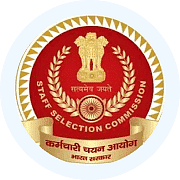SSC CGL Exam > SSC CGL Videos > SSC CGL Tier 2 - Study Material, Online Tests, Previous Year > Trade Policy: Import Substitution
Trade Policy: Import Substitution Video Lecture | SSC CGL Tier 2 - Study Material, Online Tests, Previous Year
FAQs on Trade Policy: Import Substitution Video Lecture - SSC CGL Tier 2 - Study Material, Online Tests, Previous Year
| 1. What is import substitution? |  |
Ans. Import substitution is an economic policy that aims to reduce a country's dependence on imported goods by promoting the domestic production of those goods. It involves implementing measures such as tariffs, quotas, subsidies, and other barriers to restrict imports and encourage local industries to produce and supply the goods that were previously imported.
| 2. What are the main objectives of import substitution? |  |
Ans. The main objectives of import substitution are to promote self-sufficiency, reduce reliance on imports, and stimulate domestic industries. By producing goods domestically, countries aim to create employment opportunities, develop local industries, retain foreign exchange, and achieve economic growth and stability.
| 3. What are the advantages of import substitution policies? |  |
Ans. Import substitution policies can have several advantages. Firstly, they can help protect domestic industries from foreign competition, allowing them to grow and become more competitive over time. Secondly, these policies can reduce dependence on imports, ensuring a more secure supply of essential goods. Finally, import substitution can promote technological development and innovation as domestic industries strive to improve their production capabilities.
| 4. What are the disadvantages of import substitution policies? |  |
Ans. Import substitution policies also have some disadvantages. One of the main drawbacks is the potential for reduced product quality and variety, as domestic industries may struggle to match the quality and range of imported goods. Additionally, import substitution can lead to higher prices for consumers, as domestic production may be more expensive than imported alternatives. Furthermore, protectionist measures can hinder international trade relationships and limit access to foreign markets.
| 5. Has import substitution been successful in achieving its objectives? |  |
Ans. The success of import substitution policies varies across different countries and time periods. While some countries have experienced economic growth and industrial development as a result of import substitution, others have faced challenges such as inefficiency, lack of competitiveness, and dependence on government support. It is important to carefully assess the specific context and conditions of each country when evaluating the success or failure of import substitution policies.
Related Searches















